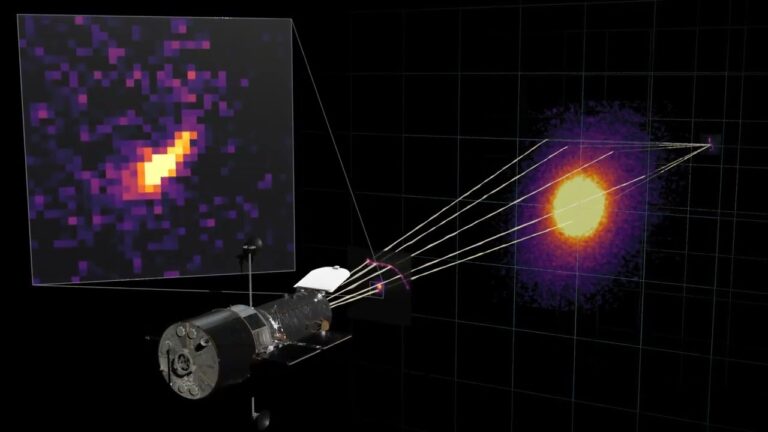Largest black hole found yet revealed through gravitational lensing can fit 30 billion suns.
The ultramassive black hole in the galaxy cluster Abell 1201 packs a mass of 30 billion suns.
A group of astronomers has stumbled upon a colossal black hole that could possibly be the largest one ever discovered. This massive black hole, categorized as an ultramassive black hole, has a mass of 30 billion suns and resides at the core of a galaxy that is situated hundreds of millions of light-years away from Earth.
The scale of this black hole far surpasses that of the usual supermassive black holes found in galaxies, which usually range from a few million to a few billion solar masses. The discovery was made when the astronomers were examining a galaxy located even farther away from Earth than the one that houses the gargantuan black hole.
Through gravitational lensing, which involves the bending of light by gravity around extremely massive objects, the foreground galaxy magnified the background object, leading to the detection of the black hole.
Gravitational lensing often serves as a natural telescope for astronomers, providing them with a clearer view of objects that are too far away to be discerned by human-made telescopes.
In a statement, James Nightingale, an astrophysicist at Durham University in the U.K. and the lead author of the new study, expressed his excitement over the discovery of a black hole with a mass of around 30 billion times that of our sun, which is one of the largest black holes ever found and is situated at the upper limit of what is theoretically possible.
To calculate the size of the black hole, the team used the Hubble Space Telescope to capture a series of images, analyzing the magnification of the foreground object. By utilizing advanced computer modeling, the researchers simulated the degree of light bending around the foreground galaxy, where the black hole is located. They tested thousands of black hole sizes before eventually discovering a solution that aligned with the observations.
This black hole is located in one of the galaxies of the Abell 1201 galaxy cluster and was the first to be detected using this particular technique. Despite its enormous size, the black hole is not particularly active, indicating that it is not consuming excessive amounts of material and therefore not generating strong X-ray radiation. This makes it extremely challenging to study using other methods.
Nightingale noted that the majority of the biggest black holes known to us are in an active state, generating light, X-rays, and other radiation by heating up matter that is drawn near to the black hole. However, with the aid of gravitational lensing, researchers can study inactive black holes, which is currently not possible in far-off galaxies. This technique could help detect numerous black holes beyond our local universe and uncover how these exotic objects evolved further back in cosmic time.
Do not forget to share your opinion with us to provide you with the best posts !




0 Comments